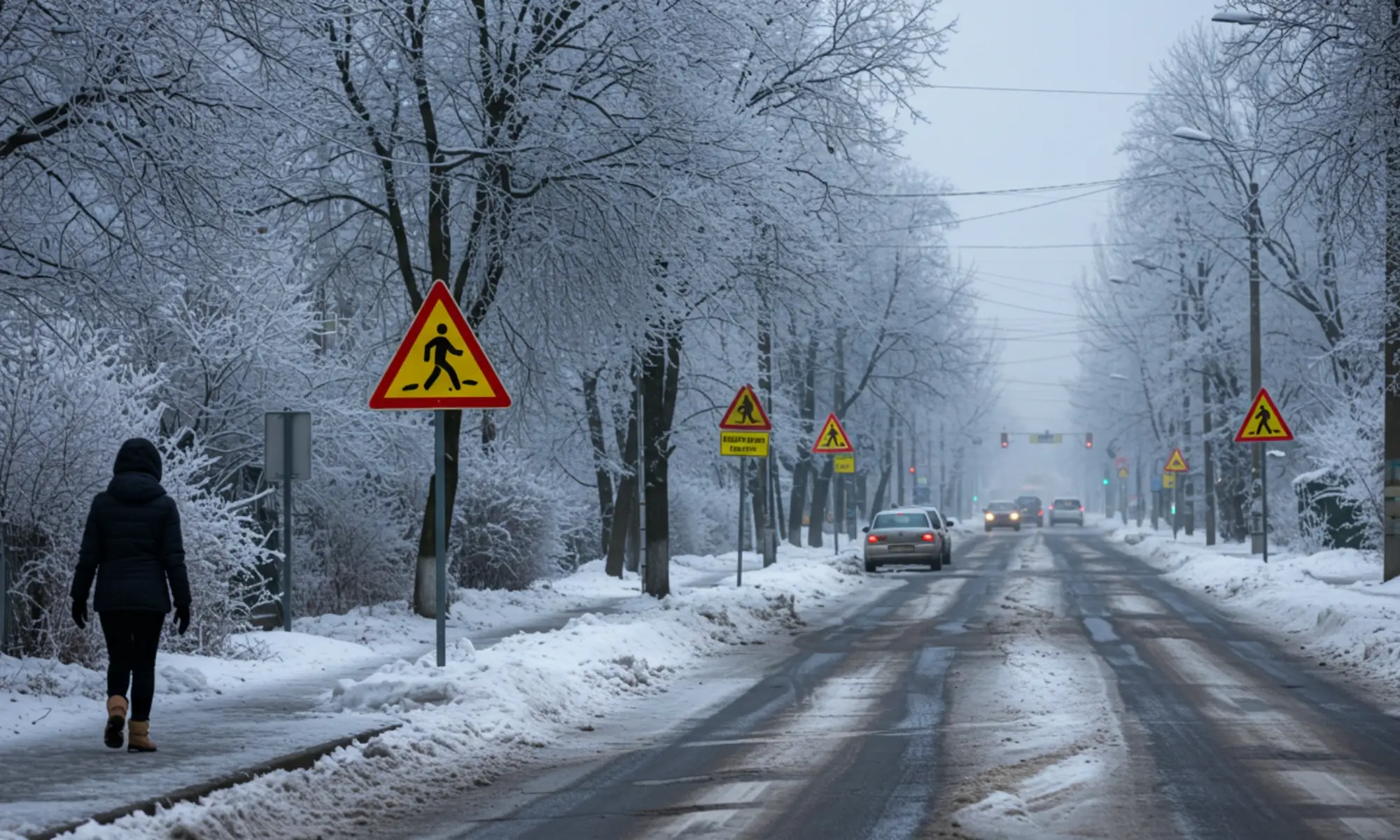Ice may look harmless or even beautiful during the winter season, but it is one of the most dangerous natural elements people encounter in daily life. From slippery sidewalks and icy roads to falling icicles and frozen rooftops, ice hazards pose significant risks to pedestrians, drivers, workers, and property owners alike. These dangers can lead to serious injuries, accidents, and even life-threatening situations if not properly managed.
Understanding the causes of ice hazards and knowing how to prevent and respond to them is essential for protecting health, safety, and infrastructure during cold weather.
Understanding Ice Hazards
Ice may appear harmless, but it significantly alters the safety of our surroundings. When water freezes, it creates smooth, hard surfaces that reduce friction, making it difficult for both people and vehicles to maintain balance and control. This transformation introduces multiple types of risks that are often underestimated.
- Slips, Trips, and Falls: Ice-covered walkways, stairs, and parking lots are some of the most common sites for accidents in winter. Even a thin, nearly invisible layer of “black ice” can cause people to lose footing instantly.
- Road Traffic Hazards: For drivers, icy roads mean reduced traction. Vehicles take longer to stop, steering becomes unpredictable, and sudden braking often leads to skidding or collisions. Black ice on highways is particularly dangerous as it blends with the road surface.
- Falling Ice and Structural Risks: Ice accumulation on rooftops, power lines, or trees can break off unexpectedly. Falling icicles are sharp and heavy, posing severe injury risks. Ice dams on roofs can also lead to water leaks and structural damage.
- Workplace and Outdoor Risks: Workers in construction, delivery, or utility services face increased hazards when equipment, ladders, and scaffolding are coated in ice. Cold stress, frostbite, and hypothermia add another layer of danger in icy conditions.
- Community and Environmental Impact: Beyond individual safety, ice hazards can disrupt transportation, damage infrastructure, and strain emergency services during severe weather events.
In short, Ice hazards arise not only from direct physical contact (slipping or falling) but also from indirect risks like traffic accidents, falling debris, and exposure to extreme cold.
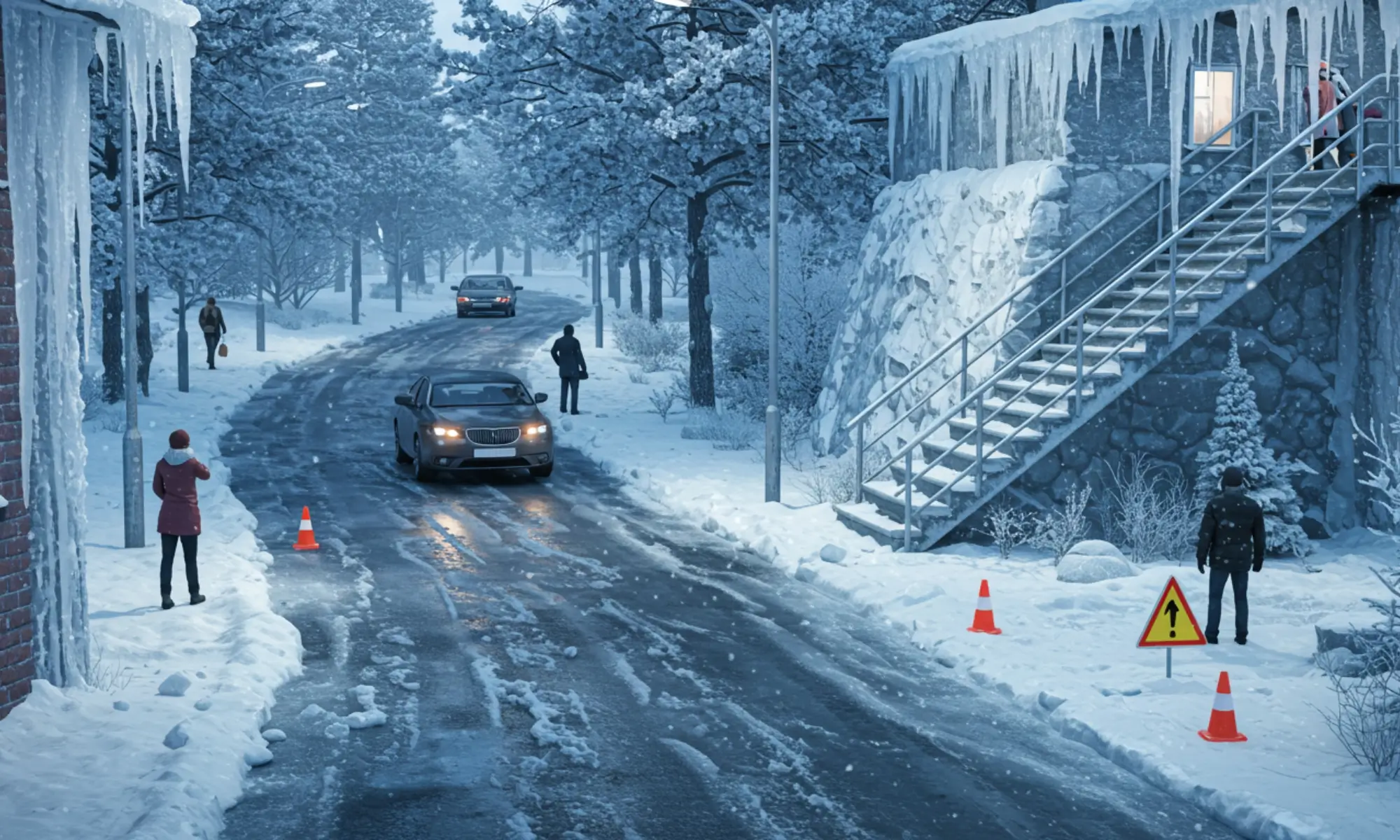
Common Areas Where Ice Hazards Occur
Ice doesn’t form uniformly; it collects in specific areas where water, snow, or freezing conditions are most likely to persist. Recognizing these common locations helps individuals, businesses, and communities take preventive action.
- Roads and Highways: Ice on roads creates one of the biggest winter safety risks. Black ice—thin, transparent layers that blend with asphalt—is particularly dangerous for drivers since it is almost invisible until traction is lost. Bridges and overpasses freeze faster than normal roads because they are exposed to cold air from above and below.
- Sidewalks and Parking Lots: Pedestrian areas often accumulate ice when snow melts during the day and refreezes at night. These surfaces become slippery quickly, leading to frequent slips and falls. Parking lots are especially risky because of constant vehicle movement and foot traffic.
- Steps, Ramps, and Entrances: Building entrances, stairways, and ramps are high-risk zones because they are used repeatedly throughout the day. Even a thin sheet of ice here can cause multiple accidents if not treated with salt, sand, or anti-slip mats.
- Roofs and Overhangs: Melting snow on rooftops can refreeze and form icicles or ice dams. Icicles hanging from gutters or ledges may look decorative but can break off suddenly, causing injuries to people or damage to property below.
- Industrial and Construction Sites: Work environments where heavy machinery, scaffolding, and elevated platforms are used become hazardous when coated in ice. Equipment controls can freeze, ladders can become dangerously slick, and workers face heightened risk in such conditions.
Ice hazards are most common on roads, walkways, entrances, rooftops, and worksites—places where people and vehicles frequently move or where water collects and freezes. Proactive monitoring and maintenance of these areas can prevent accidents and injuries.
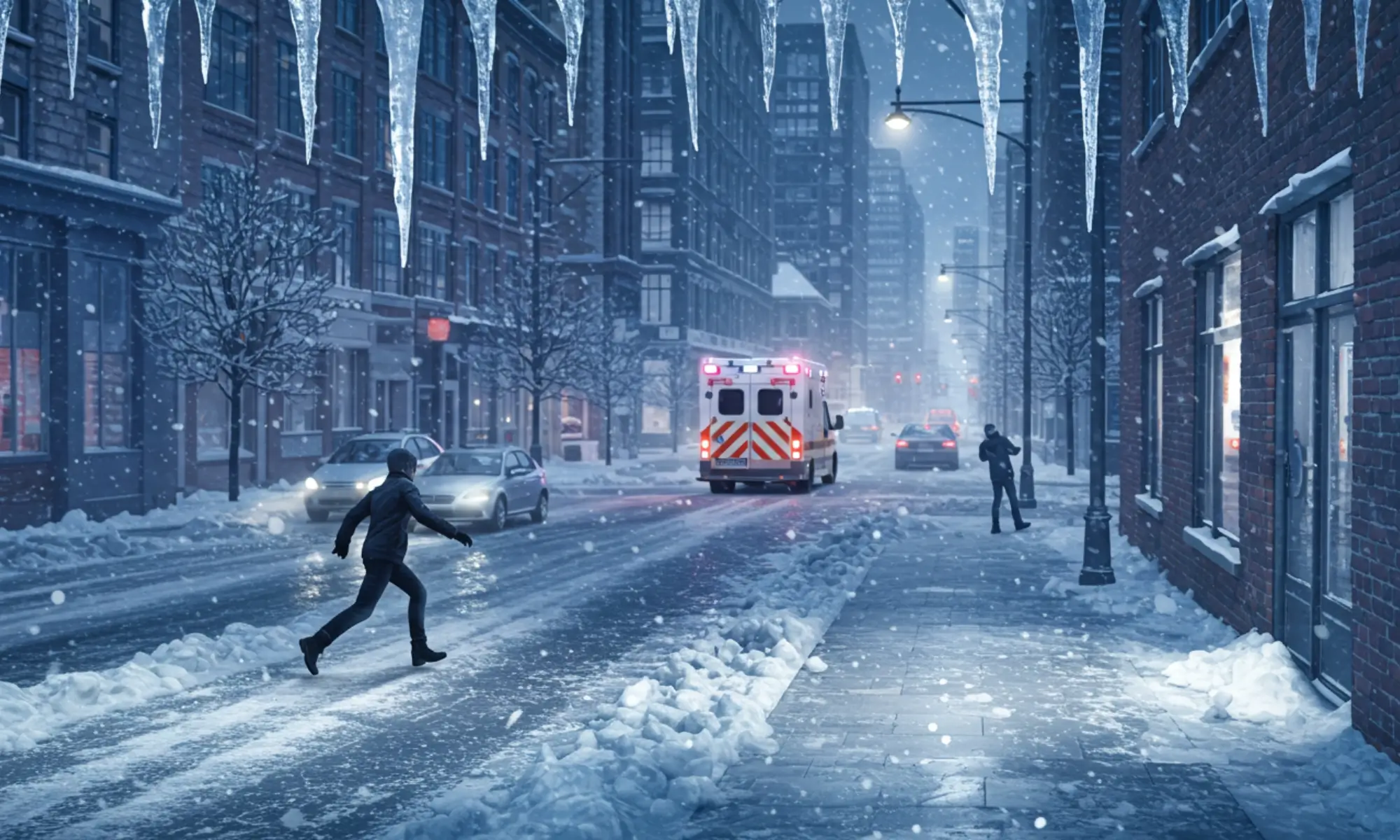
Health and Safety Risks
Ice hazards don’t just cause inconvenience—they directly threaten health, safety, and even lives. The risks range from minor injuries to life-threatening conditions, depending on the environment and the level of exposure.
- Injuries from Slips and Falls: Ice-covered sidewalks, stairs, and parking lots are major causes of accidents. Falls often result in sprains, broken bones, concussions, or back injuries. For elderly individuals, even a simple slip can lead to serious complications like hip fractures.
- Vehicle Collisions: Icy roads reduce tire traction, making it harder for drivers to stop or steer. This greatly increases the likelihood of crashes, multi-vehicle pileups, and roadside fatalities. Black ice, which is nearly invisible, is especially dangerous during early morning or late-night driving.
- Falling Ice and Structural Hazards: Icicles, ice sheets, or frozen branches can fall without warning, causing head injuries, cuts, or property damage. Ice accumulation on roofs and power lines can also lead to collapses, electrocution risks, or extended power outages.
- Cold-Related Illnesses: Prolonged exposure to icy conditions can cause frostbite (tissue freezing in fingers, toes, or ears) and hypothermia (a dangerous drop in body temperature). Outdoor workers and stranded drivers face the highest risk.
- Electrocution and Utility Risks: When ice brings down power lines, live wires may remain exposed on the ground or in water. This creates a severe electrocution hazard for pedestrians and emergency responders.
The health and safety risks of ice range from physical injuries (slips, falls, crashes) to environmental hazards (falling ice, power outages) and medical emergencies (hypothermia, frostbite). Awareness and preparedness are essential to minimize these dangers.
Prevention and Control Measures
Ice hazards can be managed effectively with the right preventive actions. By taking proactive steps, communities, businesses, and individuals can greatly reduce the risks of accidents and injuries caused by icy conditions. Below are practical measures tailored for different groups:
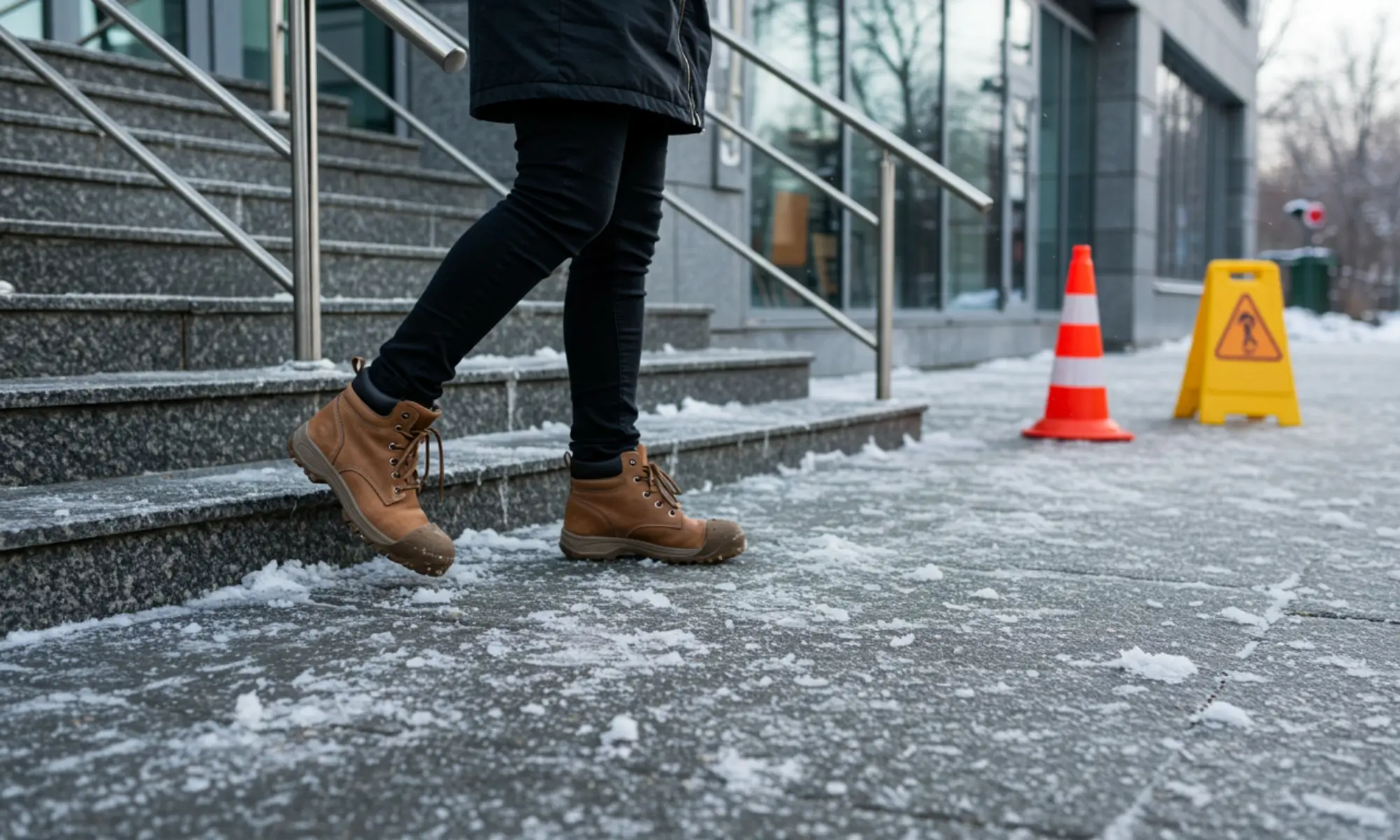
1. For Pedestrians and Workplaces
Pedestrian areas and workplaces are among the most vulnerable spots when it comes to ice hazards. People walking to offices, schools, shops, or moving around within industrial sites often encounter slippery surfaces that increase the risk of slips, trips, and falls. Since these areas see heavy daily use, proactive control measures are essential.
- Use Salt, Sand, or De-Icing Chemicals on Walkways: Spreading salt or other de-icing agents helps melt existing ice, while sand increases surface traction, making it safer for people to walk. Regular application, especially during early mornings and after snowfall, is crucial in high-traffic zones like entrances, sidewalks, and ramps.
- Wear Slip-Resistant Footwear: Choosing the right footwear significantly lowers the chance of accidents. Shoes and boots with slip-resistant soles, deep treads, or rubber grips provide better friction against icy surfaces, helping pedestrians and workers maintain balance even on slick ground.
- Install Handrails on Stairs and Ramps: Handrails provide a vital support system in icy conditions. They give pedestrians a firm grip when balance is lost and are especially useful for vulnerable groups such as the elderly, children, and workers carrying loads. Properly installed, sturdy handrails on all frequently used stairs and ramps can prevent many falls.
- Place Warning Signs Near Icy Areas: Even with preventive treatment, some areas remain hazardous—such as shaded walkways, building entrances, or surfaces where water tends to refreeze. Posting clear, visible warning signs alerts pedestrians and workers to exercise extra caution in these zones.
For pedestrians and workplace environments, preventing ice hazards comes down to surface treatment, personal safety equipment, structural support, and hazard awareness. Together, these measures create safer walking conditions, reduce accident risks, and protect both the public and employees during icy weather.
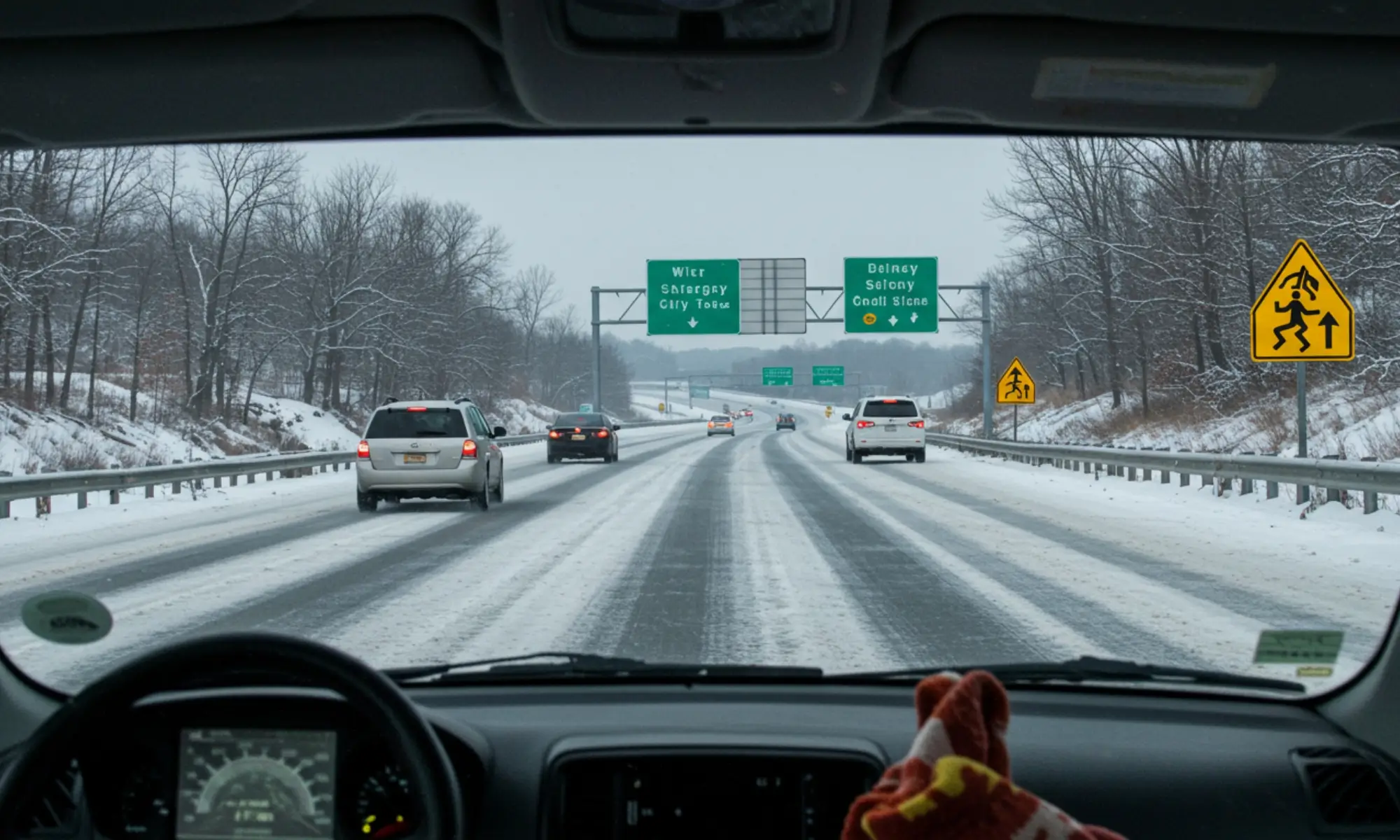
2. For Drivers
Driving in icy conditions poses one of the greatest risks during winter. Ice reduces tire traction, lengthens stopping distances, and makes steering unpredictable. Black ice, in particular, is nearly invisible, creating sudden hazards even for experienced drivers. To stay safe, motorists should adopt the following preventive measures:
- Drive Slowly and Increase Following Distance: Reduced traction on icy roads means vehicles need more time to stop. Slowing down and keeping a greater distance from the car ahead allows drivers more reaction time, minimizing the risk of collisions.
- Equip Vehicles with Winter Tires: Winter or snow tires are designed with deeper tread patterns and softer rubber that provide superior grip on snow and ice. They reduce skidding, improve handling, and make it safer to drive in freezing temperatures.
- Keep Emergency Supplies in the Car: During icy weather, vehicles can become stranded for hours due to breakdowns or accidents. Having blankets, a flashlight, food, water, and a first-aid kit ensures that drivers and passengers remain safe and comfortable until help arrives.
- Avoid Sudden Braking or Sharp Turns: Abrupt movements can easily cause vehicles to skid or lose control on icy roads. Gentle acceleration, slow braking, and smooth steering are essential for maintaining stability when driving in winter conditions.
For drivers, preventing ice hazards means adjusting speed and driving behavior, equipping vehicles properly, and being prepared for emergencies. These precautions not only protect the driver but also reduce risks for passengers and other road users.
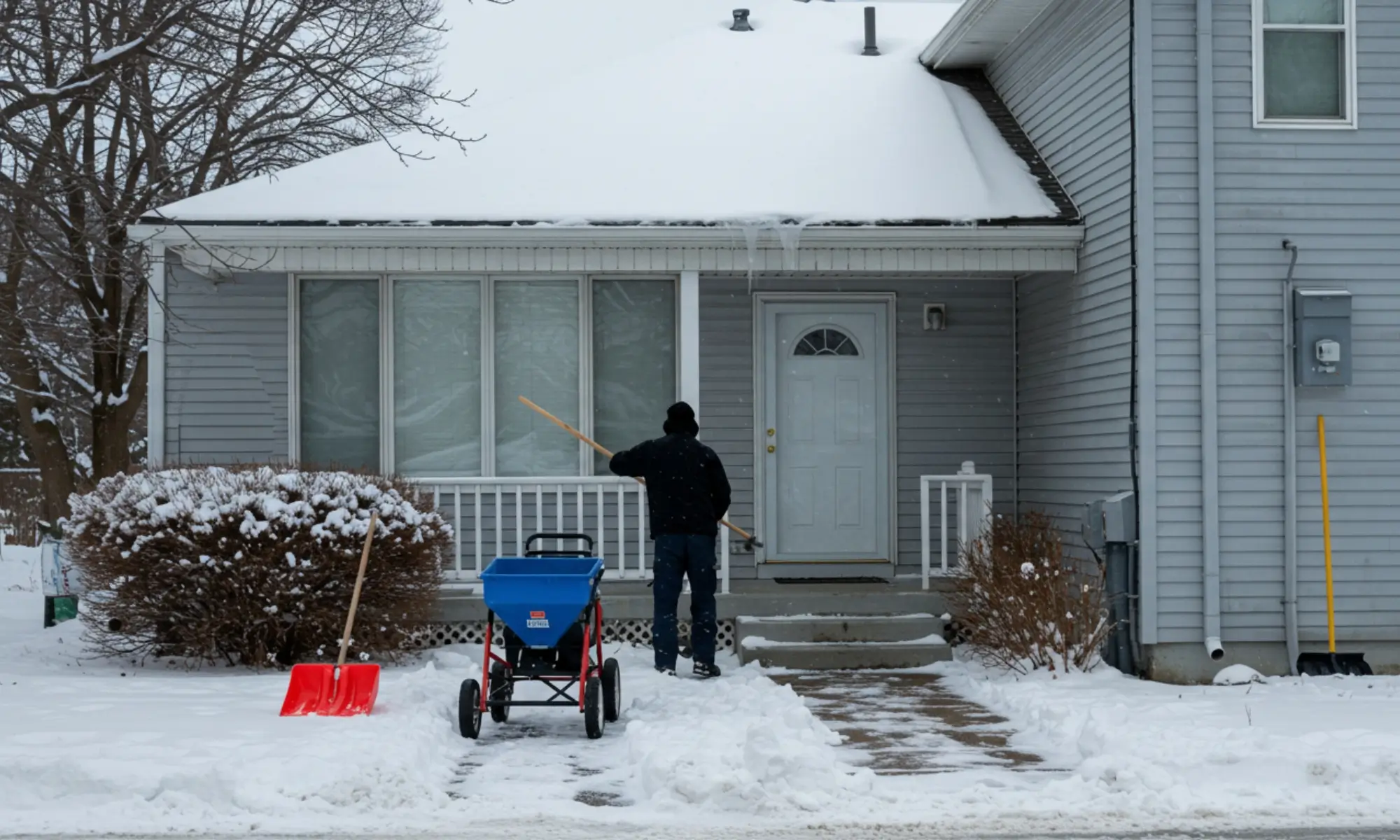
3. For Property Owners
Property owners play a crucial role in reducing ice-related risks for residents, tenants, visitors, and the general public. Whether managing a private home, apartment complex, or commercial building, proactive maintenance is essential to prevent accidents and legal liabilities.
- Clear Snow and Ice Promptly from Sidewalks and Entrances: Walkways, driveways, and building entrances are high-risk areas where slips and falls frequently occur. Removing snow before it compacts into ice and applying de-icing agents helps maintain safe access for pedestrians. Timely snow and ice removal also ensures compliance with many municipal safety regulations.
- Remove Icicles and Ice Dams Safely: Icicles hanging from gutters, eaves, or ledges may look harmless but can fall suddenly, causing severe injuries or property damage. Similarly, ice dams form when melted snow refreezes at roof edges, blocking proper drainage and leading to leaks or structural damage. Removing them carefully—or hiring professionals when needed—reduces both safety hazards and repair costs.
- Inspect and Maintain Gutters and Downspouts: Poorly maintained gutters and downspouts can cause water to overflow and refreeze on sidewalks, creating hidden slip hazards. Regular inspections before and during winter help ensure proper drainage, reducing the likelihood of dangerous ice patches forming around the property.
- Ensure Good Drainage to Prevent Water Refreezing: Proper drainage systems direct melting snow and rainwater away from walkways, driveways, and building foundations. Without good drainage, standing water can refreeze into slippery surfaces, increasing fall risks and potential structural issues. Proactive maintenance, such as clearing drains and grading surfaces, helps minimize these dangers.
For property owners, preventing ice hazards means regular snow and ice removal, structural upkeep, and proper drainage management. These actions not on
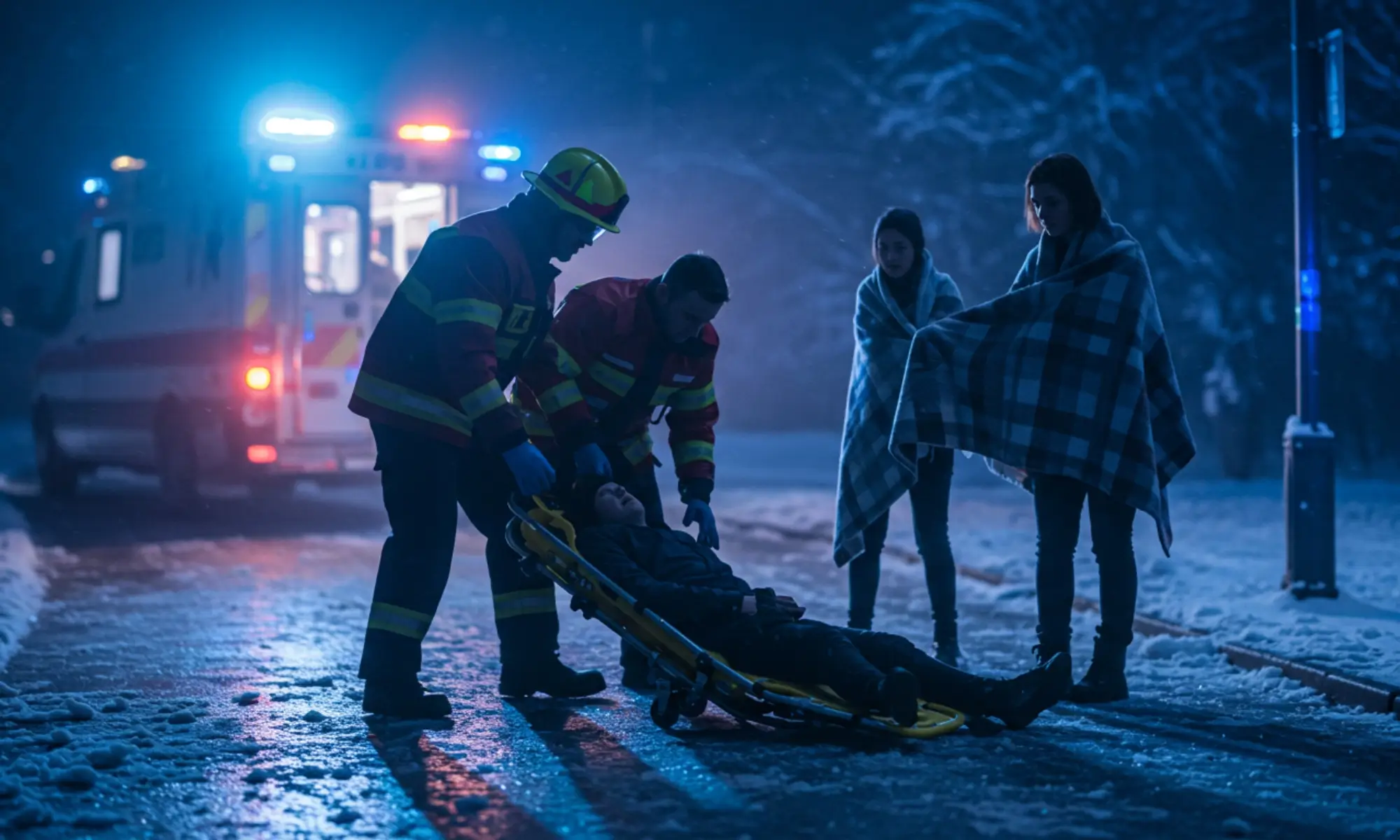
Emergency Response and First Aid
Even with preventive measures, accidents from ice hazards can still occur. Quick and effective emergency response is essential to minimize harm and prevent minor incidents from becoming life-threatening. Knowing how to act in these situations can make a significant difference in outcomes for both individuals and communities.
1. Slip and Fall Injuries
- If someone slips on ice and is injured, encourage them to remain still, especially if head, neck, or back injury is suspected.
- Call emergency services immediately if the person is unconscious, bleeding heavily, or unable to move.
- For minor injuries such as bruises or sprains, apply ice packs (not directly on the skin) to reduce swelling and provide support with a bandage or brace.
2. Vehicle Accidents on Icy Roads
- If stranded after a crash, it is often safer to remain inside the vehicle to avoid exposure to freezing temperatures or other road hazards.
- Run the engine periodically to provide heat, but ensure the exhaust pipe is clear of snow to prevent carbon monoxide poisoning.
- Use hazard lights, reflective markers, or flares to alert other drivers and rescuers.
3. Frostbite and Hypothermia
- Frostbite: Look for signs like pale, hard, or numb skin—commonly on fingers, toes, nose, or ears. Move the person to a warm area and gradually rewarm the affected parts with warm (not hot) water or body heat. Do not rub the skin, as this can cause tissue damage.
- Hypothermia: Symptoms include intense shivering, confusion, slurred speech, and drowsiness. Move the person indoors, replace wet clothing with warm, dry layers, and wrap them in blankets. Provide warm (non-alcoholic, non-caffeinated) drinks if the person is conscious, and seek medical help immediately.
4. Falling Ice or Structural Hazards
- If struck by falling ice, treat cuts or wounds with pressure to stop bleeding.
- Head injuries should be treated seriously—monitor for dizziness, nausea, or loss of consciousness, and call emergency services if symptoms occur.
5. Electrocution Risks from Downed Power Lines
- Never touch or approach a power line brought down by ice or fallen trees.
- Keep at least 30 feet (10 meters) away and contact the utility company or emergency services immediately.
- Warn others to stay clear until professionals handle the situation.
Emergency response for ice hazards involves staying calm, protecting the injured from further harm, and seeking medical assistance quickly. Knowing basic first aid for falls, vehicle accidents, frostbite, hypothermia, and electrocution risks can save lives during icy weather conditions.
Conclusion
Ice hazards are an unavoidable reality of winter, but with awareness and preparation, their risks can be greatly reduced. By practicing preventive measures, such as clearing walkways, driving cautiously, and maintaining properties, communities can stay safe and resilient throughout icy conditions. Equally important is knowing how to respond in emergencies, from treating slips and frostbite to handling vehicle accidents and downed power lines. Ultimately, safety in icy weather depends on both individual responsibility and collective action—when everyone takes precautions, the dangers of ice can be managed effectively.

